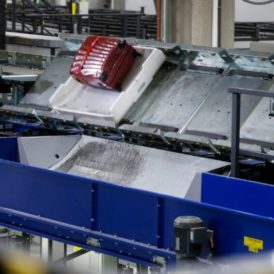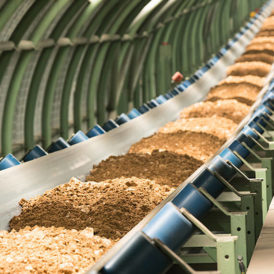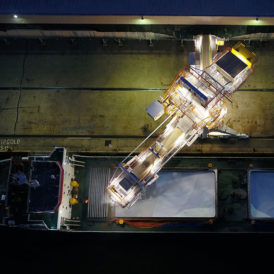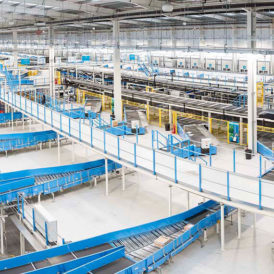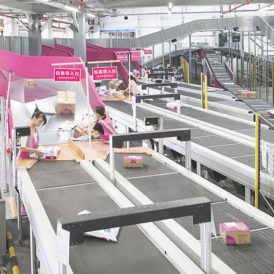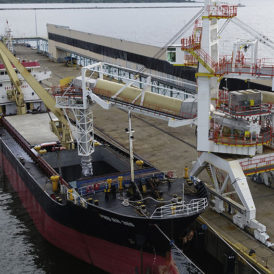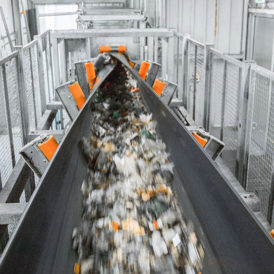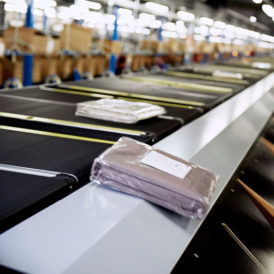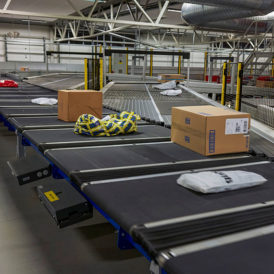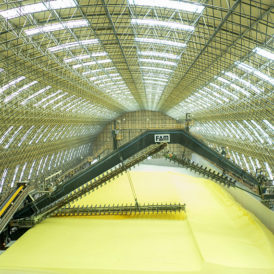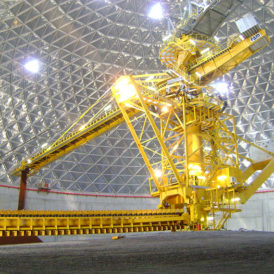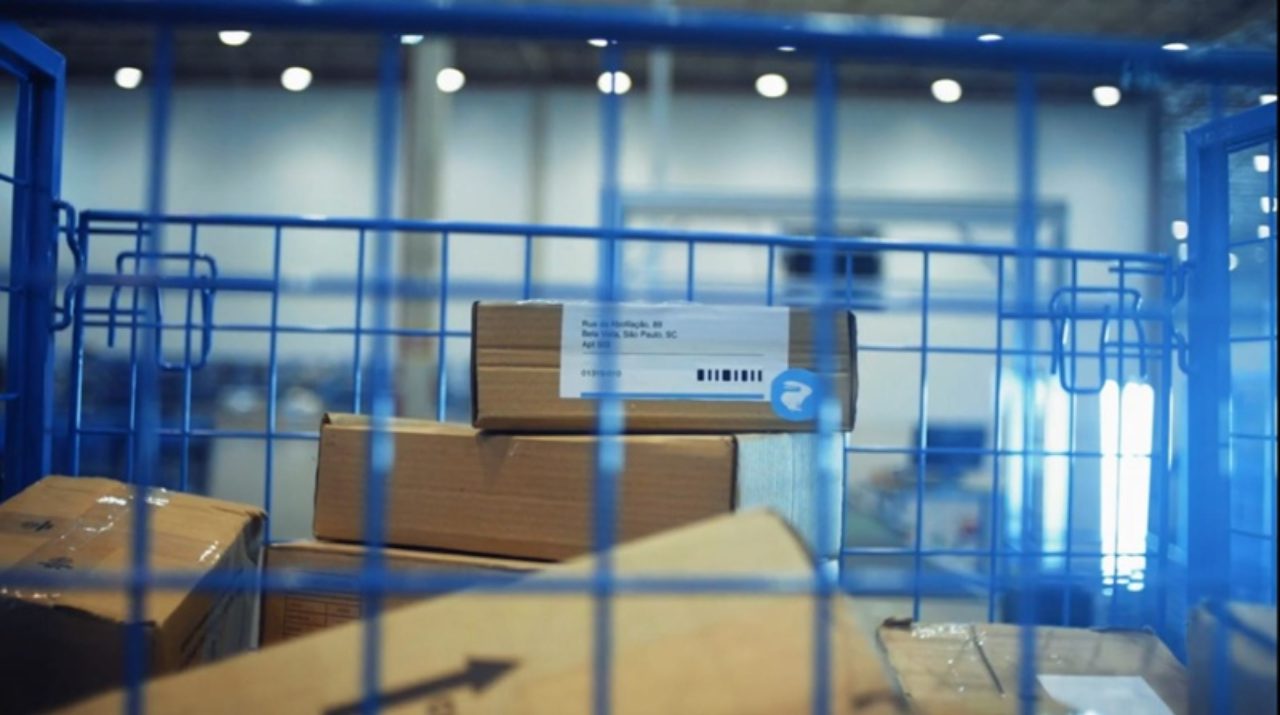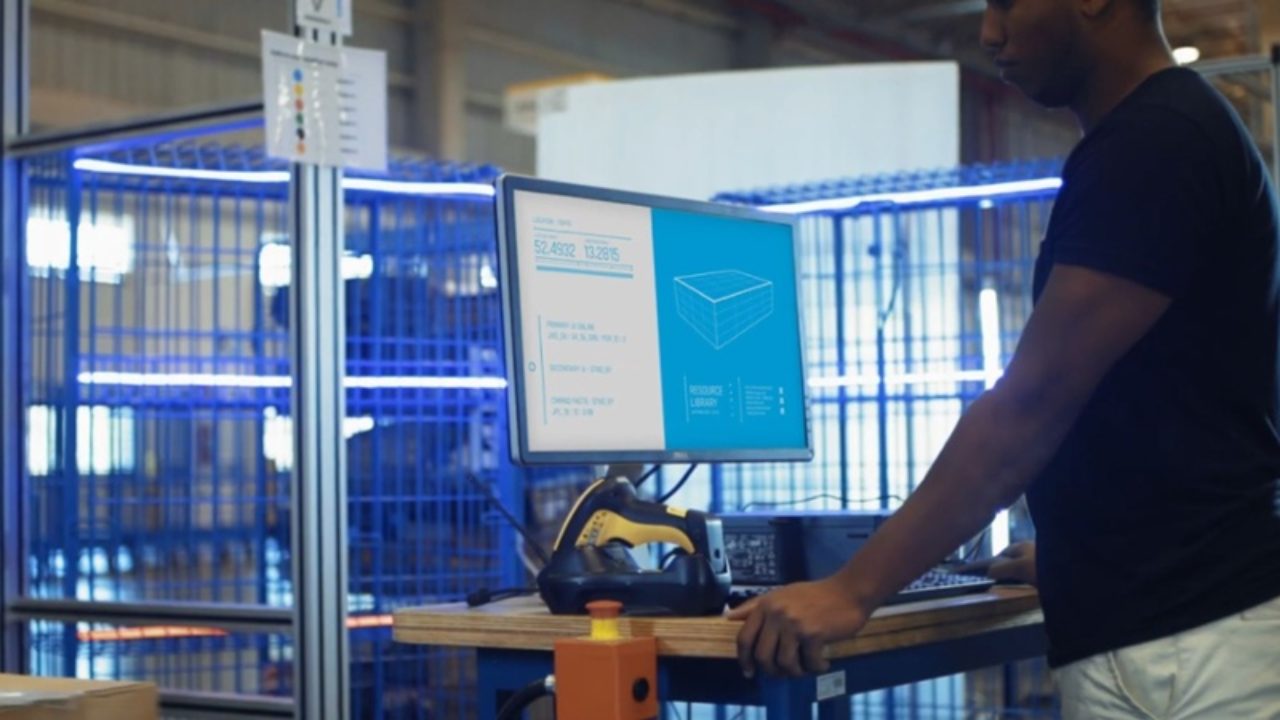What were Loggi’s considerations for automation?
What led to Loggi’s decision to deploy a limited-level automated solution?
From the start, it was Loggi’s commitment to its customers that led it on its path to automation, as delivery time and fast sortation were all important. But Loggi also knew it was constantly evolving so was looking for an adaptable solution until it understood its own processes better and what it really required for the future.
Loggi also understood that as its manual processes were very dependent on employee productivity, it couldn’t control its parcel flows and the potential for error. At this early stage, it needed an adaptable automated machine – rather than an entire system – that could help eliminate these errors.
Automation as the solution
Loggi decided to start with a line sorter system, a simple but high-speed automated solution.
This level of automation enabled the startup to generate infeed cadence and output flow in the sorter’s chutes with very little manual intervention. It meant parcels were made available to staff at the pace required by its operations.
Loggi could also measure productivity at every step of its operation which, in turn, could facilitate process flow improvements. The line sorter solution has given Loggi a greater sense of control over its operations and the company is no longer at risk of losing knowledge if people leave the company.
To continually expand and grow without automation was not sustainable for Loggi. But while Loggi’s automation didn’t require differently qualified people, it did mean adapting its workforce to a new reality. Other work areas needed to be created, such as control, planning, maintenance and training.
Loggi found that when introducing automation, training is particularly essential, both for familiarising staff to new processes and increasing the sorter productivity.
What did Loggi achieve with its initial automation step?
By moving from a manual process to a new automated process, Loggi was able to achieve significant volume gains.
With its new, cross-belt version of a line sorter system, it could increase its processing capacity immediately, from 40,000 packages a day to 60,000 parcels a day. As Loggi could offer better quality to its customers, its volumes scaled exponentially. Loggi now handles 320,000 parcels a day, with a daily capacity of up to 400,000 parcel if required.
